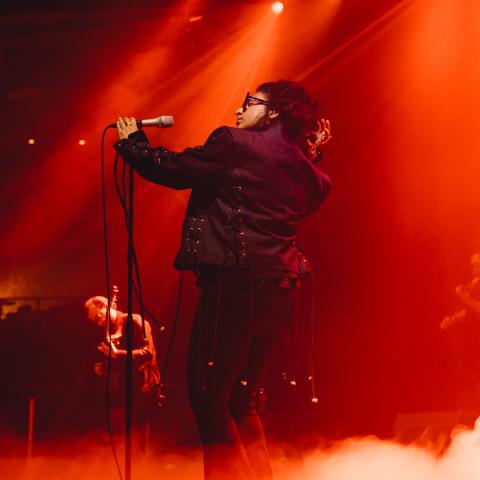The Most Underrated Hip-Hop Producers, According to J. Rawls

Image by John Davenport
Last month, Toki Wright, chair of the Professional Music Department, hosted a conversation with Herb Alpert Visiting Scholar and producer Jason "J. Rawls" Rawls, and producers and assistant professors J. Rhodes and Daedelus to explore music production, global sonic influences, creative entrepreneurship, and the evolving future of hip-hop.
J. Rawls—known as the soulful architect of underground boom bap hip-hop—shared insights from his journey producing “Brown Skin Lady” for Mos Def and Talib Kweli, as well as crafting jazzy beats for the Roots, Common, Slum Village, Madvillain, and more. Reflecting on the transformation of Zev Love X into MF DOOM, Rawls emphasized the importance of perseverance and continuing to create, even without immediate recognition.
The panel opened with a discussion on underrated hip-hop producers, spotlighting often-overlooked talents like Steel Tipped Dove, Child Actor, No I.D., and Nottzraw, as well as the more well-known Q-Tip and Zev Love X/MF DOOM. Their picks reflected a deep appreciation for innovation and the nuances of influence that don’t always get mainstream attention.
For up-and-coming producers, Grammy-winner Justin L. Rhodes (aka J. Rhodes)—whose credits include work with Talib Kweli, Dr. Dre, Lecrae, Royce da 5'9", and Killer Mike—advised locking in with a single artist to develop a distinct, recognizable sound. “Think Metro Boomin and Future, or Drake and 40,” he said, urging producers to resist diluting their creative identity across too many styles.
When Toki Wright posed the question of whether calling oneself a “hip-hop producer” is too limiting, the panel agreed: while hip-hop is a powerful identity, genre labels shouldn’t box in a creator’s imagination. As J. Rawls put it, “Hip-hop was created by sampling and reconstructing existing art—it’s inherently expansive.”




